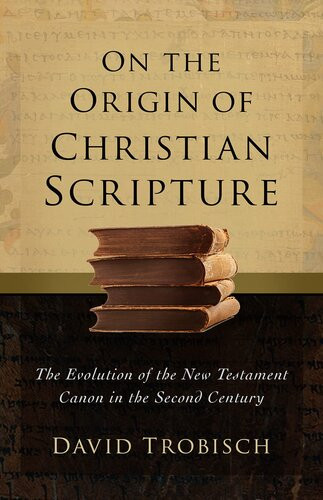

Most ebook files are in PDF format, so you can easily read them using various software such as Foxit Reader or directly on the Google Chrome browser.
Some ebook files are released by publishers in other formats such as .awz, .mobi, .epub, .fb2, etc. You may need to install specific software to read these formats on mobile/PC, such as Calibre.
Please read the tutorial at this link: https://ebookbell.com/faq
We offer FREE conversion to the popular formats you request; however, this may take some time. Therefore, right after payment, please email us, and we will try to provide the service as quickly as possible.
For some exceptional file formats or broken links (if any), please refrain from opening any disputes. Instead, email us first, and we will try to assist within a maximum of 6 hours.
EbookBell Team

4.0
6 reviewsThe New Testament claims to be a collection of writings from eight authors. The manuscript tradition and the first provenance narratives place its publication in the middle of the second century, when many other books on Jesus and his first followers were circulating.
Competing publications on Jesus communicate knowledge secretly passed on from generation to generation, transcending time and geographical boundaries. Like the Canonical Edition of the New Testament, they use first-century voices to address second-century concerns, such as whether the Creator of the world was the Father of Jesus, the role of women in congregations, the culture of producing and distributing books, and the authority of Jewish Scripture for Christians. The shared meta-narrative is the story of a divine messenger sent to earth to deliver the promise of eternal life to those who believe his message.
The editorial narrative of the Canonical Edition names a certain Theophilus as the implied publisher who assembles the collection, organizes it in four volumes, and presents it to the public when Paul is in Rome and faces his day in court. Historically, the New Testament was published a century after Paul's death as an interpolated and enlarged revision of the Marcionite Edition, which combined one gospel book with several letters of Paul. It presented itself as a publication of autographs for an international Greek-speaking readership in Central Europe, North Africa, Asia Minor, and Greece. This perspective provides new answers to old exegetical questions like the genre of the Johannine corpus, the function of synoptic parallels, and the authorship of the letters of Paul.